|
Silvereye Zosterops lateralis
|
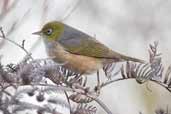 |
Australia
February / April 2006
The Silvereye is distributed in eastern, south-eastern and south-western Australia as well as in several Pacific islands. It is
found in a wide variety of habitats mainly coastal and sub-coastal where they feed on fruit, nectar and insects. They form large flocks outside the
breeding season.
|
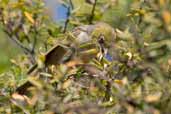 |
There are about 17 sub-species of which 9 occur in Australia. These are as defined by Schodde & Mason. Photos 1 and 2 are of the nominate race found in Tasmania. Note
the russet-cinnamon over the flanks, the whitish undertail coverts, the pale grey throat, the rich deep citrine colour of the crown, face and wings
with a light dusky wash to the face and the rich mid-grey mantle encroaching on the hind-crown. |
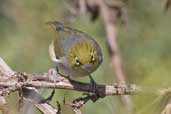 |
Photo 3 is, I think, of the race Z. l. pinarochrous. The photo was taken at Wye Valley, Victoria in the
zone of intergradation between Z. l. pinarochrous and Z. l. westernensis. The former is described by Schodde & Mason as having
"Crown, lower back and folded wings dull mid citrine, the tone suffusing variably into upper back; mantle and upper back dull mid
grey; dull citrine face with light dusky wash; throat pale grey to variably dull citrine-yellow westwards, the tone usually restricted to
the upper throat; breast dirty mid grey, grading extensively brownish grey (most females) or dull russet brown (most males) over
flanks...." |
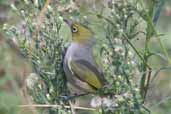 |
Photos 4, 5 and 6 are of the race Z. l. westernensis from south-eastern NSW and eastern Victoria. The
description of this sub-species mentions "Crown, lower back and folded wings rich mid citrine, the tone usually encroaching little on
upper back; mantle and upper back rich mid grey; citrine face with light dusky wash; throat light citrine tinged yellow, the tone often
restricted to upper throat; breast clear mid-grey, grading pale to mid dull russet brown over flanks; undertail coverts
off-white rarely tinged lemon...." |
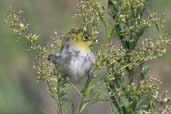 |
Photos 7 and 8 from near Albany, Western Australia are of the sub-species Z. l. chloronotus. Note the
mid-citrine to yellow throat. |
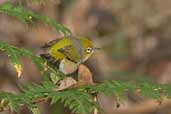 |
|
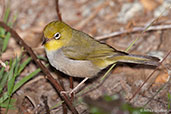 |
|
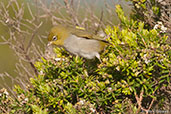 |
|
|
|







